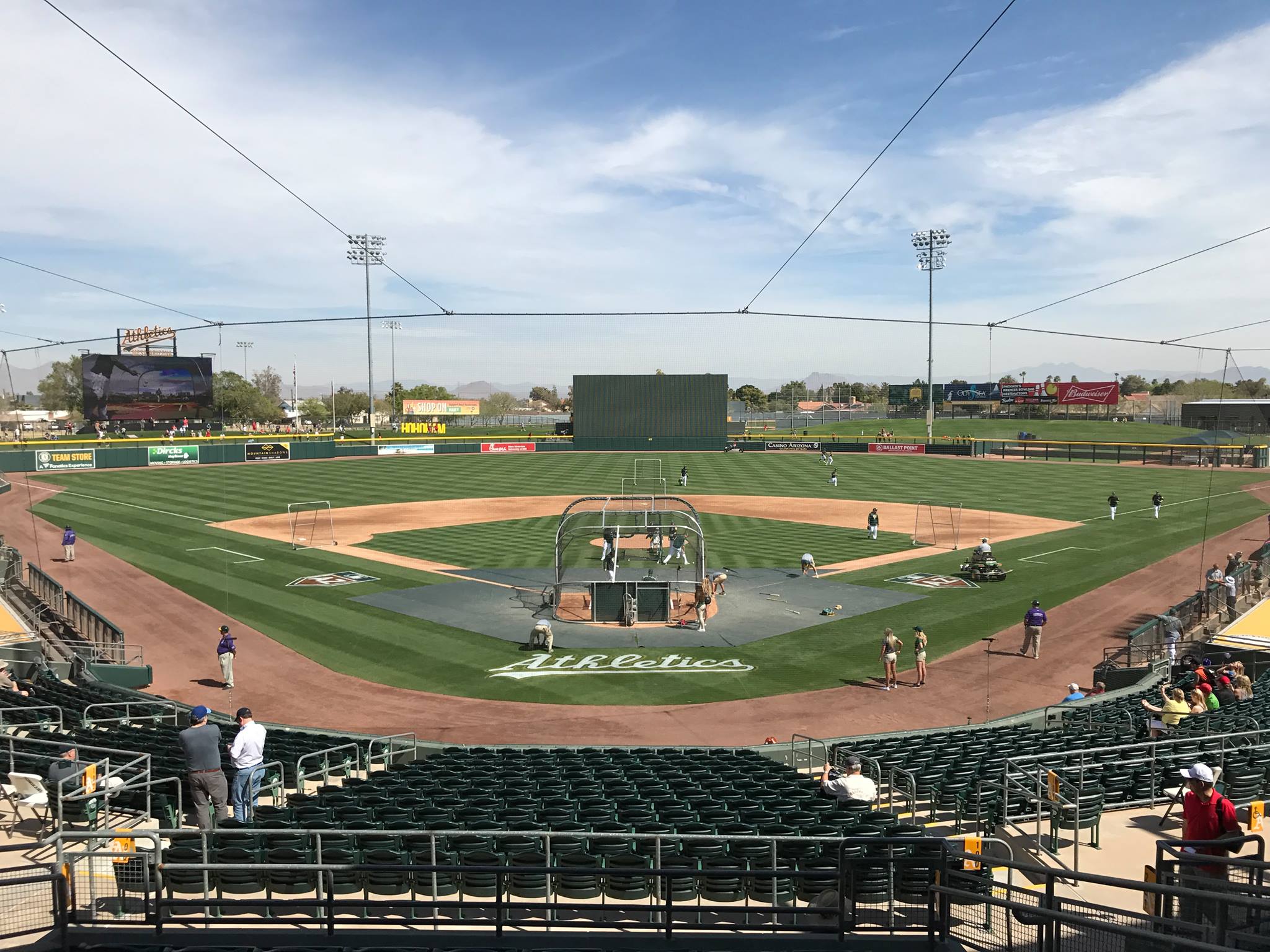
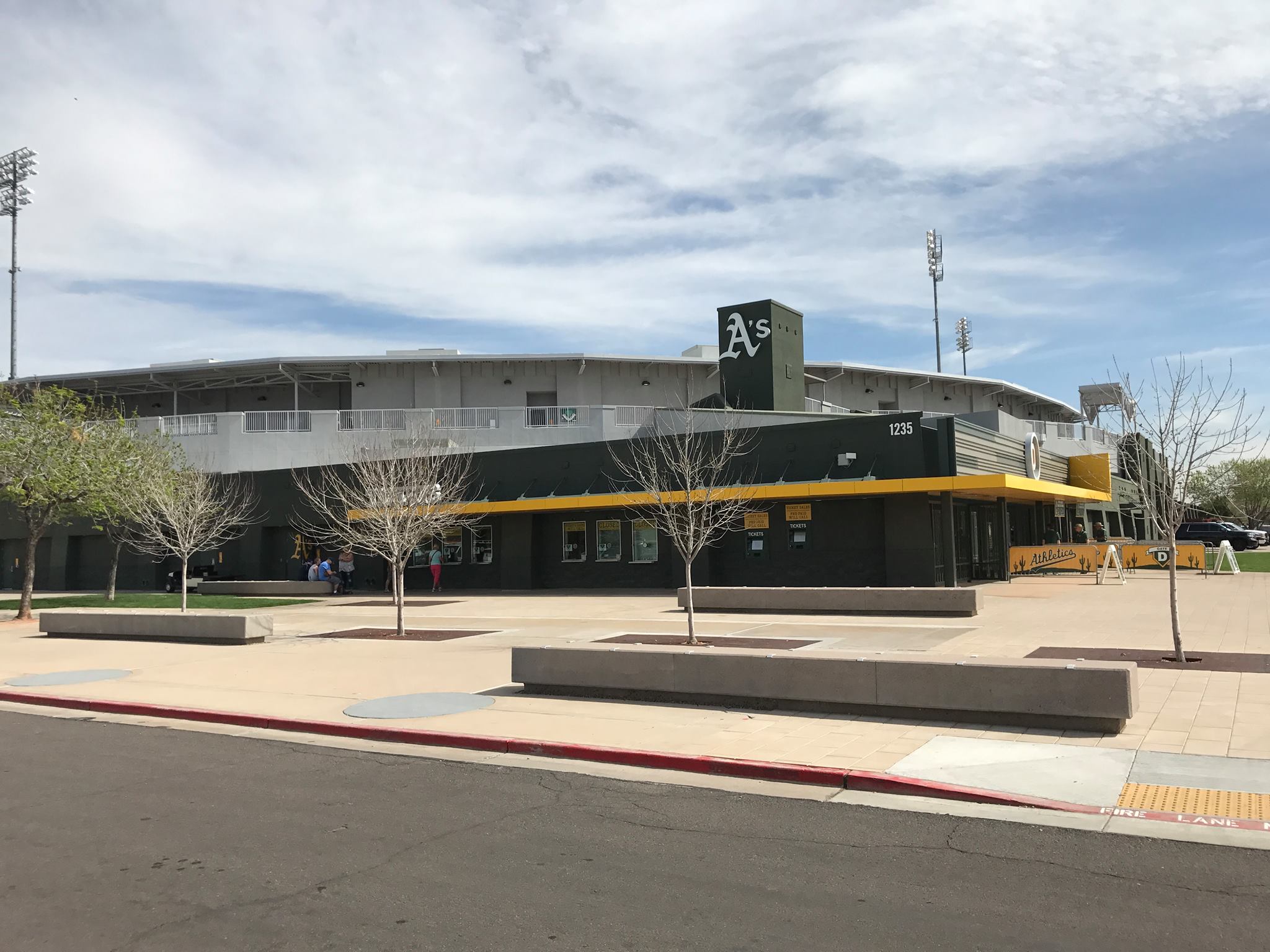
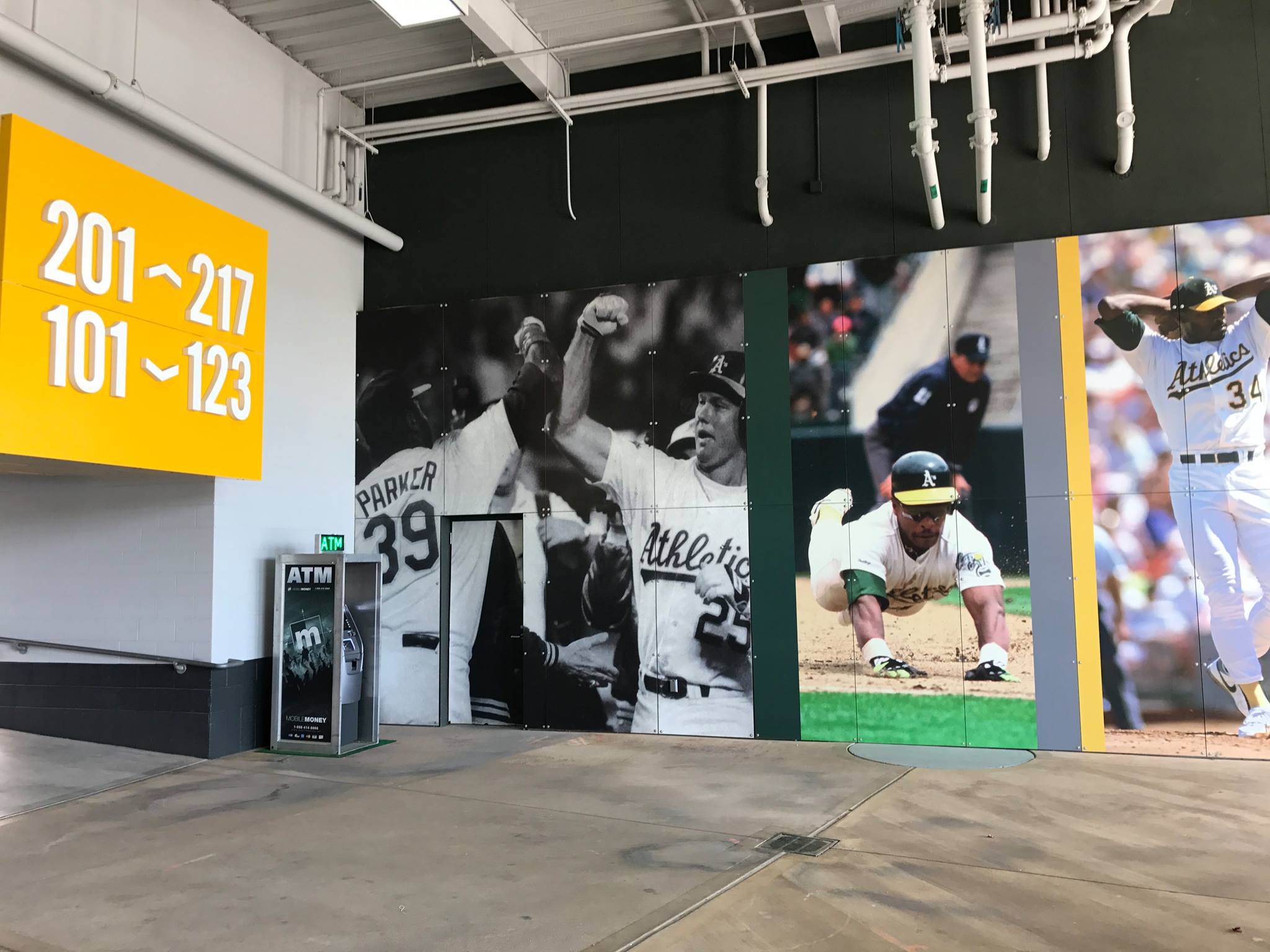

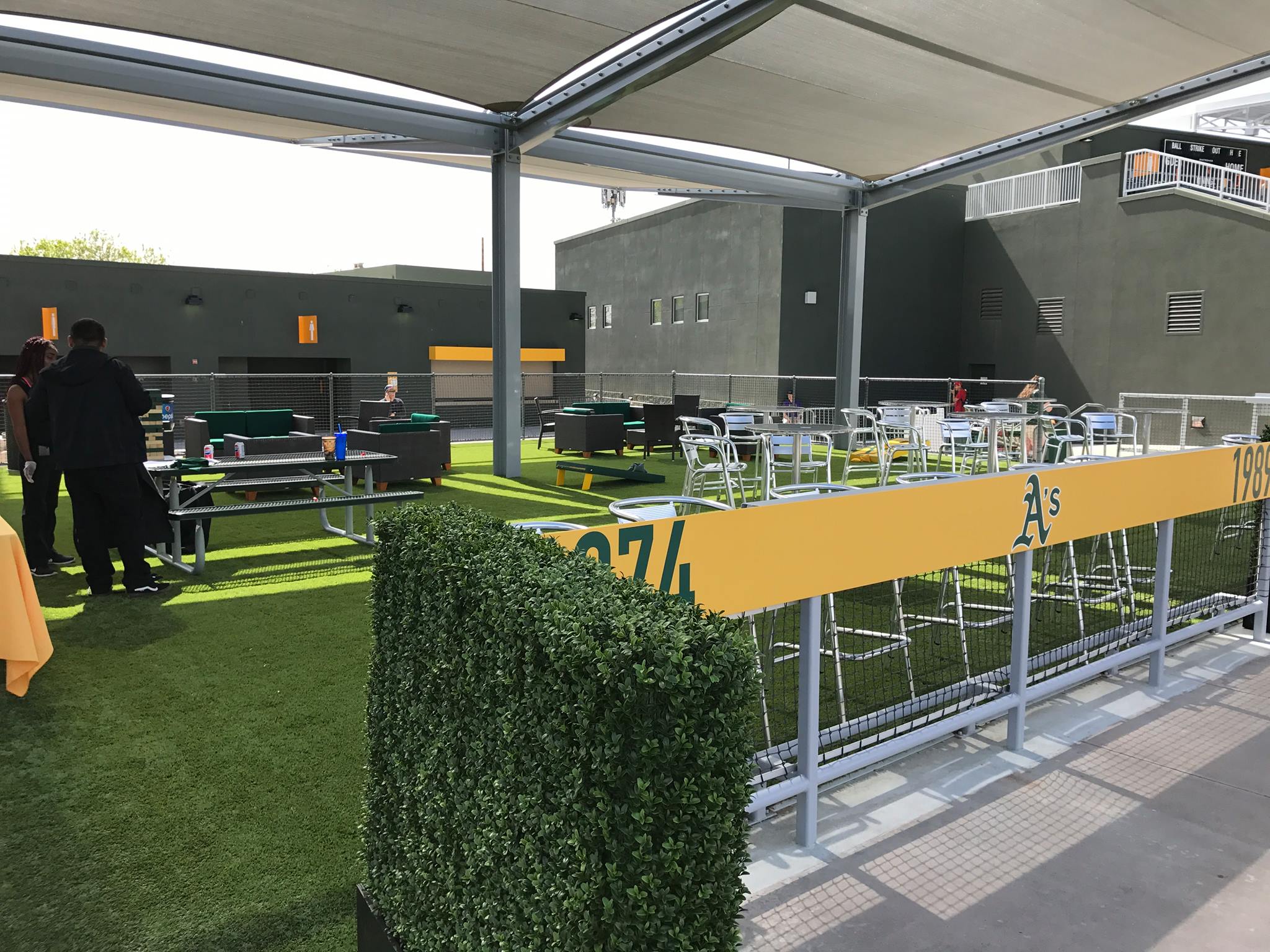
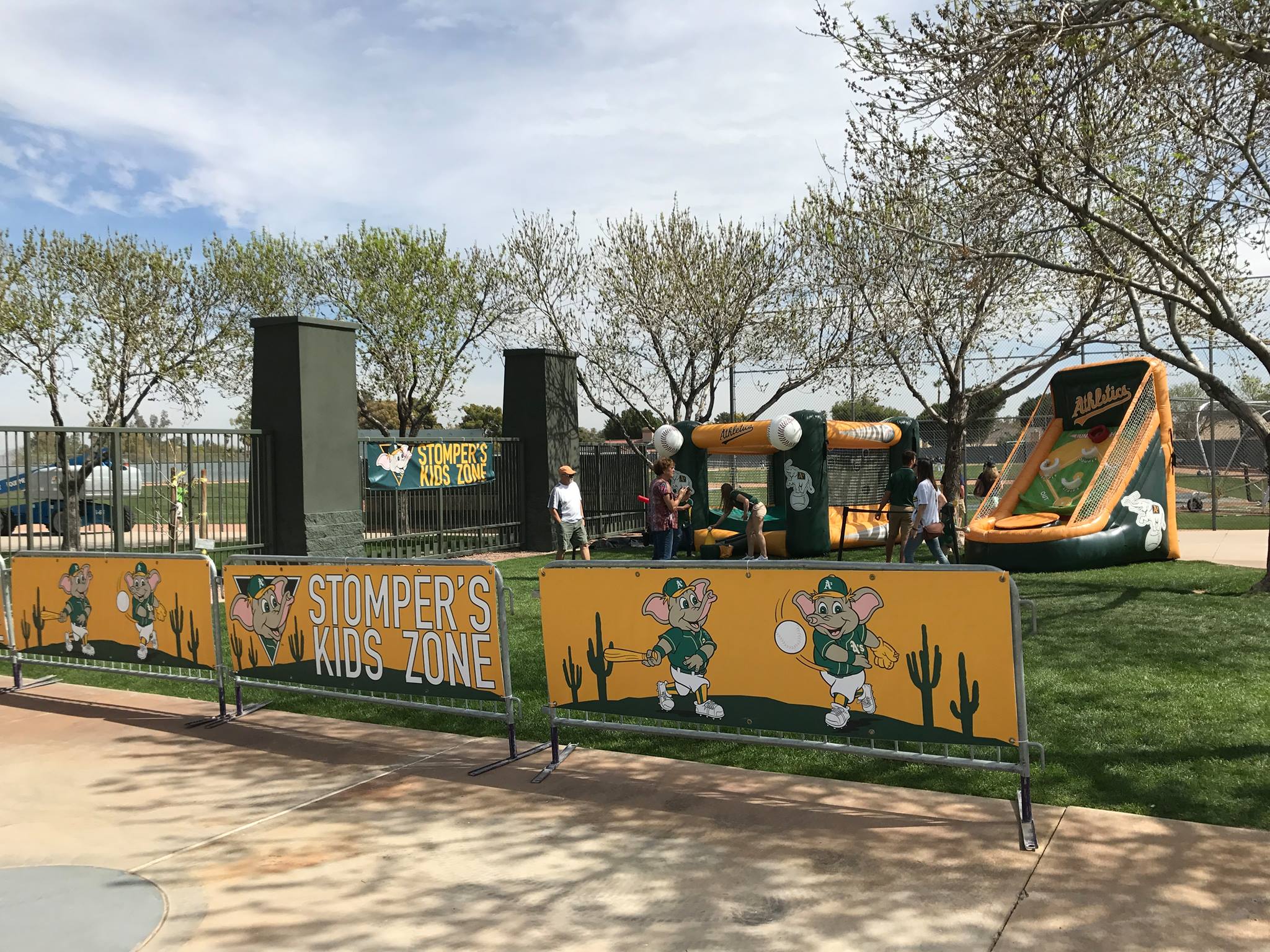

HoHoKam Stadium
| Setting | 6.5/10 | 1 Thumb Down | Location/Access | 6.5/10 | 1 Thumb Down |
|---|
| Architecture & Aesthetics | 20/28 | Thumb Sideways |
|---|---|---|
| Exterior Design/Aesthetics | 6.5/10 | Thumb Sideways |
| Interior Aesthetics/Visuals | 11/15 | Thumb Sideways |
| Concourse Aesthetics | 2.5/3 | 1 Thumb Up |
| Functionality & Essentials | 19/25 | Thumb Sideways |
|---|---|---|
| Sightlines | 8/10 | 1 Thumb Up |
| Seat Comfort | 3.5/5 | Thumb Sideways |
| Concourse Functionality | 4.5/7 | Thumb Sideways |
| Scoreboards/Tech | 3/3 | 2 Thumbs Up |
| Amenities & Features | 14.5/20 | Thumb Sideways |
|---|---|---|
| Concessions | 8.5/10 | 1 Thumb Up |
| Premium/Group Seating | 2/4 | Thumb Sideways |
| Social Spaces | 2.5/4 | Thumb Sideways |
| Kids Areas | 1.5/2 | 1 Thumb Up |
| Atmosphere, Vibe, & Policies | 14.5/17 | 1 Thumb Up |
|---|---|---|
| Ballpark Personality | 9/10 | 1 Thumb Up |
| Fan Support | 3.5/5 | Thumb Sideways |
| Ballpark Policies/Staff | 2/2 | 1 Thumb Up |
| Bonus | 7 |
|---|---|
| Final Score | 81.5 |
|---|---|
| Ranking | AZ: #8/10; Overall: #18/23 |
|---|---|
Note: The Cubs trained at HohoKam Park from 1997 to 2013. They moved into Sloan Park in 2014. The Oakland Athletics moved into this facility, now formally called HohoKam Stadium, in 2015. Because of the peculiarity of one team’s old spring training home undergoing renovations for a new team, I have decided to keep the old page here and create this new page for the Athletics’ HohoKam Stadium, even though it is the same park.
By: Cole Shoemaker
While the site dates back to 1977, the 2.0 version of HohoKam Park rebuilt for the Cubs in 1997 was pretty clearly the weakest link of its era. It had all of the requisite qualities of a decent facility (360-degree concourse, berms, party decks, etc.), but it was always a remarkably bland and sterile place to see a game, yet somehow wasn’t completely inadequate either. HohoKam was very much the New Comiskey Park of 90s spring training, if you will.
When I heard the Athletics were moving in after a full-scale renovation in 2015, I was excited. After a series of very nice renovations in Florida, some of which were more creative than newer projects, I had high expectations. Somewhat like Ed Smith Stadium in Sarasota, HokoKam was the kind of facility with basic bones that you could remake into whatever you wanted.
Yet Mesa didn’t do that. To my great disappointment, the renamed HohoKam Stadium seemed like a rebranding project instead of a renovation project. The blueprints looked identical to the old version with the structure maintained, just with new “essentials” like seats and scoreboards and a fresh coat of paint. This was far from the ambitious projects undertaken across Florida and Arizona, as Mesa clearly wasn’t trying to build a state-of-the-art facility.
So, I went into HohoKam Stadium with tepid expectations, but I came out pleasantly surprised because the facility possessed something that many of those other parks in Arizona lacked: a regional flare. This place screams Oakland. Inside and out, just try to count spaces that aren’t green, gold, or grey or don’t have some sort of Athletics’ reference. It turns out that the “rebranding” element and “a fresh coat of paint” was everything. This is excellent team branding.
Also, those “essentials” matter: while the park doesn’t have substantive architectural intentions or any outstanding features, it doesn’t have any glaring flaws either.
Looking at the whole package, HohoKam Stadium’s location is probably its primary weak spot. As with all Cactus League parks except the Brewers park, it’s not terrible, but HohoKam is not located in a particularly nice area. The bleak City of Mesa Cemetery across the street defines the scene.

The architecture and aesthetics are utterly pedestrian, but actually quite refreshing and a definite upgrade. The oddly bleak cream tone was repainted with, you guessed it, crisp shades of green, gold, and grey. No one is going to mistake this for an architectural statement, but it’s undoubtedly “fresh” and actually pretty sleek.
The interior aesthetics are more of the same but still a breath of fresh air: all greens, golds, and greys. Even the section signage and the awnings above the portals are gold. Note the gold “HohoKam” sign above the berm. Nothing about it is breathtaking, except for the especially nice mountain vistas above left field, but the overarching theme is both consistent and well-articulated.
The remarkably consistent color scheme isn’t the only thing that screams Oakland Athletics. Every feature receives some kind of team branding. Murals of team greats adorn the concourses, concession stands are themed with Oakland-related monikers, some food items are from California establishments, party decks have team championship emblems, social areas have retired numbers, the kids’ area is named after the mascot.
It’s all a wonderful sensation contrasted with the usual multi-team cookie cutter complex seen in Arizona. This is one of the quintessential “otherwise ordinary ballparks that represent the teams that inhabit them” described at the end of Surprise Stadium write-up above.
The overall functionality of HohoKam Stadium is average, perhaps a bit below-average for Arizona but perfectly respectable. The sightlines are fine and absent of anything particularly bad, but some sections down the lines could be better oriented. New fold-down seats with cupholders replaced the old ones, but there are still some bleacher seats down the lines.
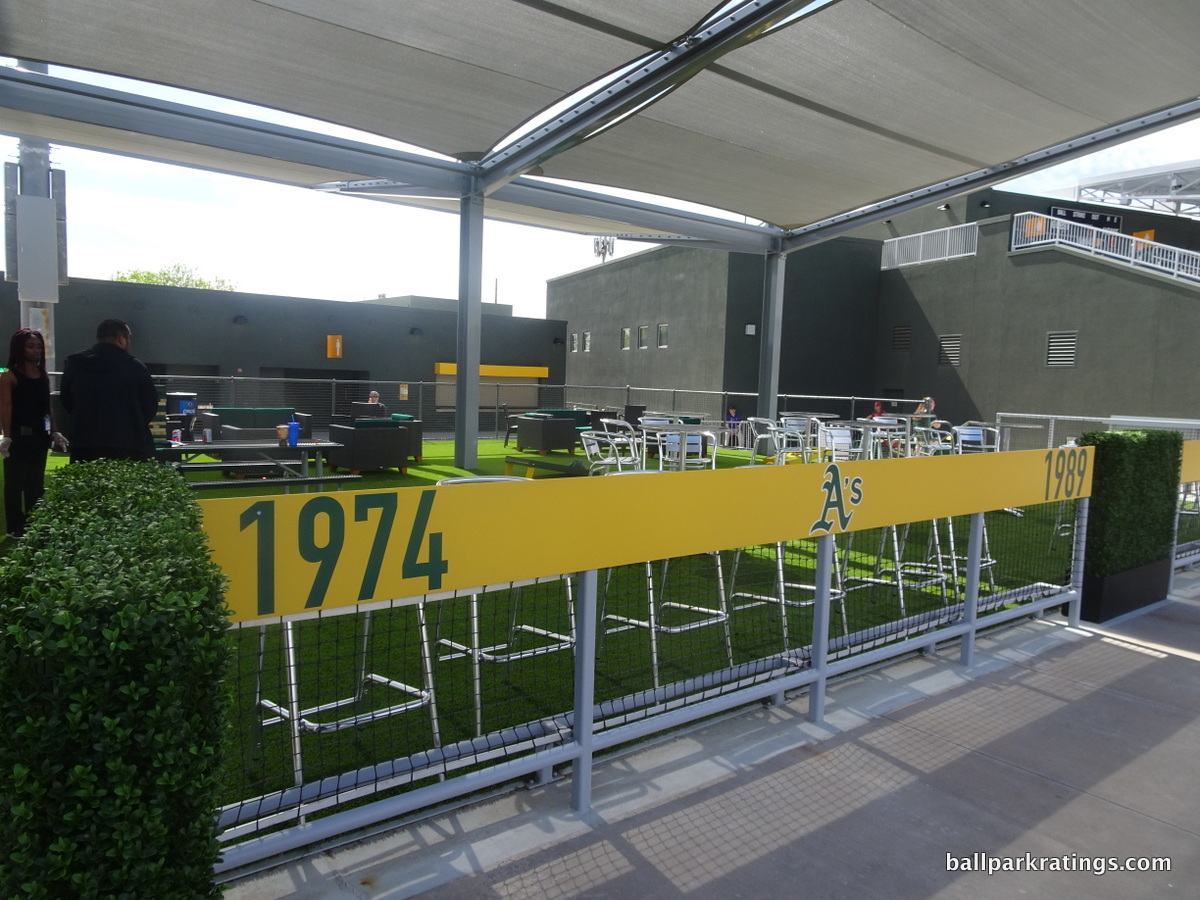
Perhaps HohoKam’s most outstanding feature is the videoboard, which is reportedly the largest in the Cactus League. The concourse is 360-degrees, but it is closed from the field and has some particularly cumbersome discontinuities down the lines and in the outfield.
HohoKam Stadium’s amenities are average, with the concessions being a highlight. Along with Mexican food, Island Noodles, Chick-fil-A, and Mustache Pretzels, HohoKam Stadium has the San Francisco-based Ike’s Love and Sandwiches, some of the highest quality food in spring training. The ballpark has some interesting sitting areas/social spaces, most notably the well-appointed Right Field Deck with drink rail seating available to all. On the downside, parts of the mezzanine could be better used, and the right field corner is devoid of activity.
Adjacent to the deck is the Right Field Lounge, a particularly attractive outdoor private party area with patio seating, couches, and cornhole games. The Hyatt Patio and six luxury suites round out the group areas. Finally, HohoKam Stadium has speed pitch and the “Stomper’s Kid Zone” for children.
In sum, HohoKam Stadium isn’t particularly outstanding in any regard, but it is rarely inadequate while doing an absolutely fantastic job of representing the team that plays here. Sure, the renovations didn’t sufficiently overhaul the park to make it state-of-the-art, but the Athletics now play in a respectable facility, either for spring training or the regular season, for the first time in generations.